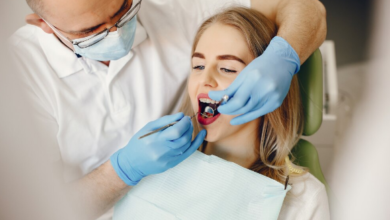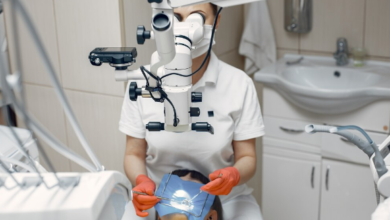Discover the Best Teeth Whitening in Atlanta: Your Guide to a Brighter Smile

Teeth Whitening in Atlanta: Understanding Your Options
When thinking about teeth whitening in Atlanta, it’s important to know what choices you have to get a brighter smile. There are different ways to whiten your teeth, from getting it done by a dentist to using stuff you can buy at the store. Each way has good and bad things about it, so it’s good to learn about them to see what’s best for you. The goal is to make your smile look nice, and knowing your choices helps you decide.
Professional Treatments
Getting your teeth whitened by a professional is a popular choice. Here’s why:
- Stronger Stuff: Dentists use stronger whitening stuff than you can buy in stores, so it usually works better.
- Custom Made: They can make the treatment just for you, so it fits your needs.
- Faster Results: You can often see a big difference after just one visit.
At-Home Solutions
Whitening your teeth at home is another option. It’s usually cheaper and more convenient. Here are some things to think about:
- Whitening Strips: These are easy to use and can make your teeth a bit whiter over time.
- Whitening Trays: You put whitening gel in a tray and wear it for a certain amount of time each day.
- Toothpastes: Some toothpastes can help remove stains and make your teeth look brighter.
Over-the-Counter Products
You can also buy whitening stuff at the store without a prescription. These products are usually weaker than what dentists use, but they can still help a little. Some examples include:
- Whitening toothpaste
- Whitening mouthwash
- Whitening pens
It’s important to remember that not all whitening products are the same. Some might work better than others, and some might cause sensitivity. Talk to your dentist before trying any new whitening treatment to make sure it’s safe for you.
Benefits of Professional Teeth Whitening
When it comes to getting a brighter smile, professional teeth whitening in Atlanta is a great choice. It’s way better than just grabbing something from the store. Here’s why:
Expertise and Precision
Going to a professional means you’re getting someone who knows what they’re doing. They can look at your teeth and figure out exactly what kind of whitening treatment will work best for you. This isn’t a one-size-fits-all thing. They consider:
- The type of stains you have.
- How sensitive your teeth are.
- What is your goal shade of white is.
Plus, they know how to protect your gums and other soft tissues from the whitening stuff, which is a big deal.
Immediate Results
One of the coolest things about professional whitening is how fast it works. You can walk in with dull teeth and walk out with a noticeably brighter smile, often in just one visit. This is because they use stronger whitening agents than you can buy over the counter. Think about it:
- Perfect for a last-minute boost before a big event.
- Saves you weeks of using strips or trays at home.
- You see the difference right away, which is super satisfying.
Long-Lasting Effects
While no whitening treatment lasts forever, professional whitening tends to give you longer-lasting results compared to at-home methods. This is partly because of the stronger whitening agents they use, but also because they prep your teeth properly and give you advice on how to maintain your bright smile. To keep your teeth looking great:
- Follow their instructions for aftercare.
- Be mindful of what you eat and drink (coffee and red wine are the enemy!).
- Keep up with regular dental check-ups.
Getting your teeth whitened by a pro is an investment. It’s not just about making your teeth look better; it’s about doing it safely and effectively. You’re paying for their knowledge, their tools, and their ability to give you a smile that lasts.
Common Causes of Tooth Discoloration
So, you’re thinking about teeth whitening? Good for you! But before you jump in, it’s a good idea to understand why your teeth aren’t as bright as you’d like. There are a bunch of things that can cause tooth discoloration, and knowing what they are can help you make better choices about your oral health and which whitening treatment is right for you. Let’s explore some common culprits.
Dietary Factors
What you eat and drink plays a huge role in the color of your teeth. Some foods and drinks are notorious for causing stains. Think about it:
- Coffee and Tea: These are big offenders. They contain tannins that can stick to your enamel and cause yellowing.
- Red Wine: Another one packed with tannins, plus it’s acidic, which can weaken your enamel.
- Dark-Colored Sodas and Juices: These can also stain your teeth, thanks to their colorings and acidity.
- Berries: While healthy, dark berries like blueberries and blackberries can leave stains behind.
- Sauces: Soy sauce, tomato sauce, and other strongly colored sauces can contribute to discoloration.
Lifestyle Choices
Your habits can also impact the brightness of your smile. Some lifestyle choices are worse than others:
- Smoking or Chewing Tobacco: Tobacco products are a major cause of tooth staining. They leave stubborn yellow or brown deposits that are tough to remove.
- Poor Oral Hygiene: Not brushing and flossing regularly allows plaque and tartar to build up, leading to discoloration.
- Not Visiting the Dentist: Regular dental cleanings can remove surface stains and prevent buildup that causes discoloration.
Aging and Medications
Sometimes, tooth discoloration is just a part of life, or a side effect of necessary treatments:
- Aging: As you get older, the outer layer of enamel on your teeth thins, revealing the yellowish dentin underneath.
- Genetics: Some people are simply predisposed to having teeth that are less white than others.
- Certain Medications: Some medications, like tetracycline antibiotics, can cause tooth discoloration, especially if taken during childhood.
- Medical Treatments: Chemotherapy and radiation can also affect tooth color.
It’s important to remember that everyone’s teeth are different, and what causes discoloration in one person might not have the same effect on another. Understanding the potential causes can help you take proactive steps to protect your smile and make informed decisions about teeth whitening treatments.
Safety Considerations for Teeth Whitening
When you’re thinking about teeth whitening in Atlanta, it’s super important to think about safety. You want a brighter smile, sure, but not at the cost of your oral health. Using the wrong products or methods can lead to some pretty uncomfortable side effects, so let’s look at how to keep things safe.
Consulting a Dental Professional
Before you even think about whitening, chat with your dentist. Seriously. They can:
- Check your teeth and gums to make sure they’re healthy enough for whitening.
- Tell you which whitening method is best for you, based on your specific needs and the type of stains you have.
- Explain the potential risks and benefits of each option.
Understanding Risks
Okay, so what are the risks? Here are a few things to keep in mind:
- Sensitivity: This is a big one. Whitening can make your teeth sensitive to hot and cold. Your dentist can recommend products to help with this.
- Gum Irritation: The whitening stuff can irritate your gums if it comes into contact with them. A professional treatment will protect your gums.
- Uneven Whitening: Over-the-counter products can sometimes lead to uneven results. A dentist can make sure you get a consistent shade.
It’s easy to get caught up in the excitement of a brighter smile, but ignoring the potential risks just isn’t worth it. A little bit of research and a chat with your dentist can save you a lot of trouble down the road.
Maintaining Oral Health
Good oral hygiene is always important, but it’s especially important when you’re whitening your teeth. Make sure you:
- Brush twice a day with fluoride toothpaste.
- Floss daily to remove plaque and food particles.
- See your dentist for regular check-ups and cleanings.
Post-Whitening Care for Lasting Results
So, you’ve just invested in teeth whitening in Atlanta and are loving your new, brighter smile. What now? The key to making those pearly whites last is proper post-whitening care. It’s not just about the initial treatment; it’s about maintaining that brilliance over time. Here’s how to keep your smile shining:
Oral Hygiene Practices
Maintaining excellent oral hygiene is the cornerstone of lasting whitening results. Think of it as the daily defense against stains. Here’s what you should be doing:
- Brush Twice a Day: Use a soft-bristled toothbrush and fluoride toothpaste. Pay attention to technique – gentle circular motions are key.
- Floss Daily: Get between those teeth! Flossing removes plaque and food particles that brushing misses, preventing stain buildup.
- Consider a Whitening Toothpaste (Sparingly): These can help maintain brightness, but use them in moderation. Overuse can sometimes lead to sensitivity.
Avoiding Staining Foods
What you eat and drink plays a huge role in how long your whitening lasts. Some foods and drinks are notorious for causing stains. It’s not about deprivation, but awareness and moderation.
- Coffee and Tea: These are major culprits. If you can’t live without them, try drinking through a straw and rinsing your mouth with water afterwards.
- Red Wine: Another big stainer. Enjoy it in moderation and consider alternating with water.
- Dark-Colored Sauces: Soy sauce, balsamic vinegar, and tomato sauce can all contribute to staining. Be mindful of your consumption.
Regular Dental Check-Ups
Regular visits to your dentist are crucial for maintaining not only the whiteness of your teeth but also your overall oral health. They can spot potential issues early and provide professional cleanings to remove stubborn stains.
- Professional Cleanings: These remove plaque and tartar buildup that regular brushing can miss.
- Check for New Stains: Your dentist can identify areas where stains are starting to reappear and offer solutions.
- Discuss Touch-Up Options: They can advise you on the best way to maintain your whitening results with occasional touch-up treatments.
Think of your teeth whitening treatment as planting a beautiful garden. The initial whitening is like planting the flowers, but post-whitening care is like watering and weeding to keep it thriving. Consistent effort is what yields the best, long-lasting results. Don’t skip the basics, and your smile will thank you!
Comparing Different Whitening Techniques
So, you’re thinking about getting your teeth whitened? Great! But with so many options out there, it can be tough to figure out what’s best for you. Let’s break down the main types of teeth whitening in Atlanta, so you can make an informed choice.
In-Office Treatments
These are the big guns of teeth whitening. You go to your dentist, and they use strong whitening agents, sometimes with light or lasers, to get your teeth noticeably whiter in a single visit. It’s fast, effective, and you have a professional making sure everything goes smoothly. Think of it as the express lane to a brighter smile.
- Pros: Quick results, professional supervision, often the most dramatic whitening.
- Cons: Can be more expensive, potential for sensitivity, requires a dental appointment.
- Best for: People who want fast results and are okay with a higher price tag.
At-Home Kits
These kits usually come from your dentist or a drugstore. They include whitening gels and trays that you wear for a certain amount of time each day. It takes longer than in-office treatments, but it’s more convenient and often cheaper. Just be sure to follow the instructions carefully!
- Pros: More affordable than in-office, convenient to use at home, gradual whitening.
- Cons: Slower results, can be messy, potential for uneven whitening if not used correctly.
- Best for: People who want a more gradual approach and are on a budget.
Natural Remedies
Okay, so these aren’t going to give you the same results as professional treatments, but some people swear by them. Things like baking soda, apple cider vinegar, and oil pulling are often mentioned as natural ways to brighten your smile. However, it’s important to be cautious and do your research, as some of these methods can be abrasive or harmful to your enamel.
- Pros: Inexpensive, uses common household items, perceived as “natural.”
- Cons: Limited results, potential for enamel damage, effectiveness not scientifically proven.
- Best for: People who are curious about natural options and understand the limitations.
Choosing the right whitening method depends on your budget, timeline, and desired level of whiteness. It’s always a good idea to talk to your dentist before starting any whitening treatment to make sure it’s safe for your teeth and gums.
Duration of Whitening Results
When you’re considering professional whitening, one of the most common questions is: how long will the results last? The truth is, there’s no one-size-fits-all answer. The longevity of your bright smile depends on several factors, including your diet and oral hygiene habits. On average, whitening results can last anywhere from a few months to a couple of years. However, habits like drinking coffee or tea and smoking can shorten that duration. Regular check-ups and proper care from a trusted dentist in Atlanta are essential for maintaining your results and keeping your smile shining.
Factors Affecting Longevity
Lots of things can impact how long your teeth stay white after a whitening treatment. It’s not just about the treatment itself, but also about your daily habits. Here are a few key factors:
- Diet: What you eat and drink plays a huge role. Things like coffee, red wine, and berries can stain your teeth over time.
- Oral Hygiene: Brushing and flossing regularly helps remove surface stains and keeps your teeth looking brighter for longer.
- Type of Whitening Treatment: Professional treatments often last longer than over-the-counter options because they use stronger whitening agents.
Maintenance Tips
So, you’ve got your pearly whites, now what? Keeping them that way takes a little effort, but it’s worth it. Here are some tips to help maintain your whitening results:
- Brush and Floss Regularly: This is a no-brainer, but it’s super important. Brush twice a day and floss once a day to remove plaque and surface stains.
- Use a Whitening Toothpaste: These toothpastes contain mild abrasives that help polish your teeth and remove stains.
- Consider Touch-Up Treatments: Talk to your dentist about at-home whitening kits or occasional in-office treatments to maintain your results.
It’s easy to forget, but your teeth are porous. That means they can absorb stains from what you eat and drink. Think of it like a white t-shirt – it’s going to get dirty if you’re not careful. So, be mindful of what you’re putting in your mouth and take steps to protect your smile.
Signs of Fading Results
Eventually, your teeth whitening will start to fade. It’s just a natural part of the process. But how do you know when it’s time for a touch-up? Here are a few signs to look out for:
- Yellowing or Graying: This is the most obvious sign. If you notice your teeth are starting to look yellow or gray, it’s time to consider another whitening treatment.
- Increased Staining: If you’re noticing more stains from coffee, tea, or other foods, it could be a sign that your whitening is fading.
- Loss of Brightness: If your smile just doesn’t seem as bright as it used to, it’s probably time for a touch-up.





